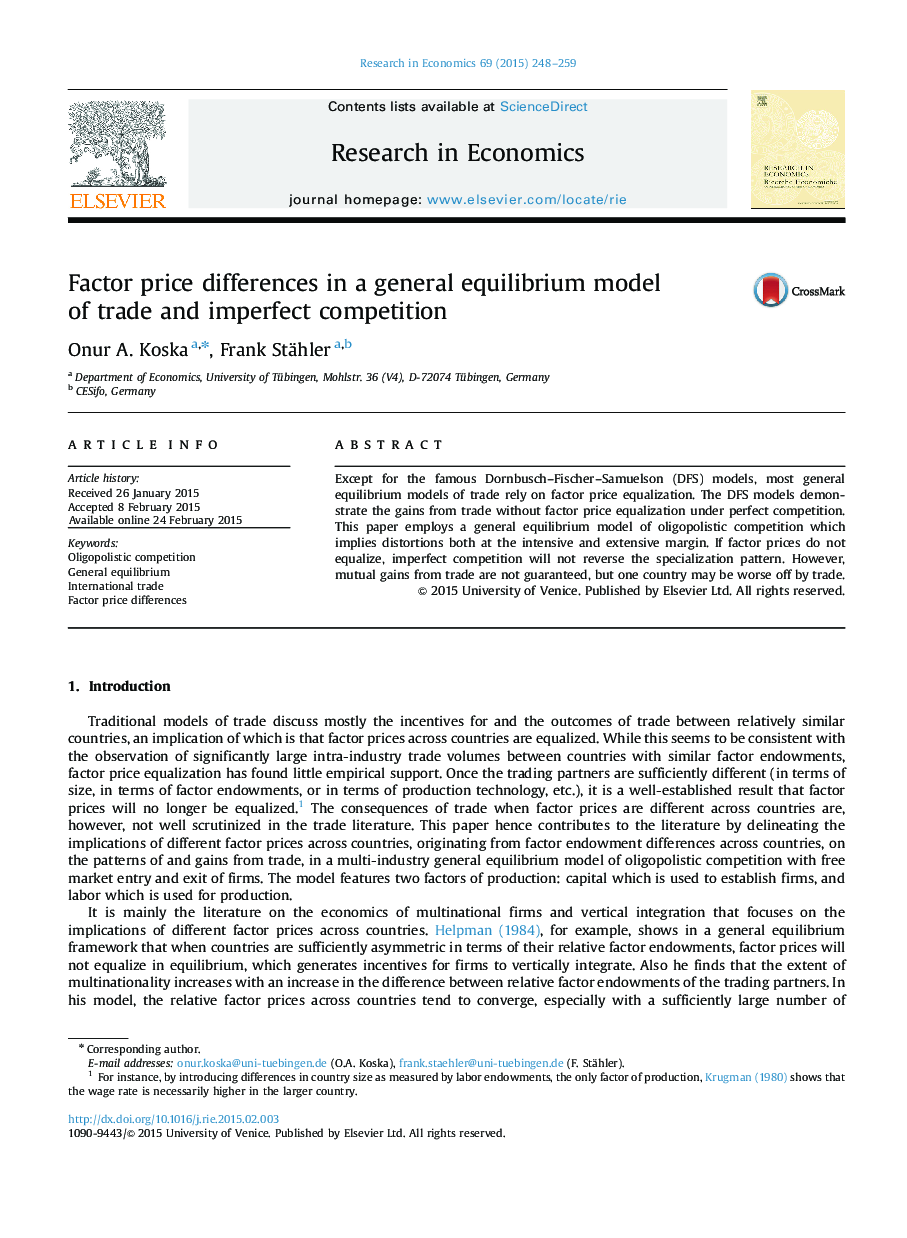| Article ID | Journal | Published Year | Pages | File Type |
|---|---|---|---|---|
| 984376 | Research in Economics | 2015 | 12 Pages |
•A multi-industry general equilibrium model of oligopolistic competition.•Free market entry and exit of firms, and different factor prices across countries.•No specialization reversals; an increase in the wage–rental ratio in both countries.•Ambiguous trade-induced changes in firm size and/or per capita consumption.•Distortions at both margins; no guaranteed mutual gains from trade.
Except for the famous Dornbusch–Fischer–Samuelson (DFS) models, most general equilibrium models of trade rely on factor price equalization. The DFS models demonstrate the gains from trade without factor price equalization under perfect competition. This paper employs a general equilibrium model of oligopolistic competition which implies distortions both at the intensive and extensive margin. If factor prices do not equalize, imperfect competition will not reverse the specialization pattern. However, mutual gains from trade are not guaranteed, but one country may be worse off by trade.
